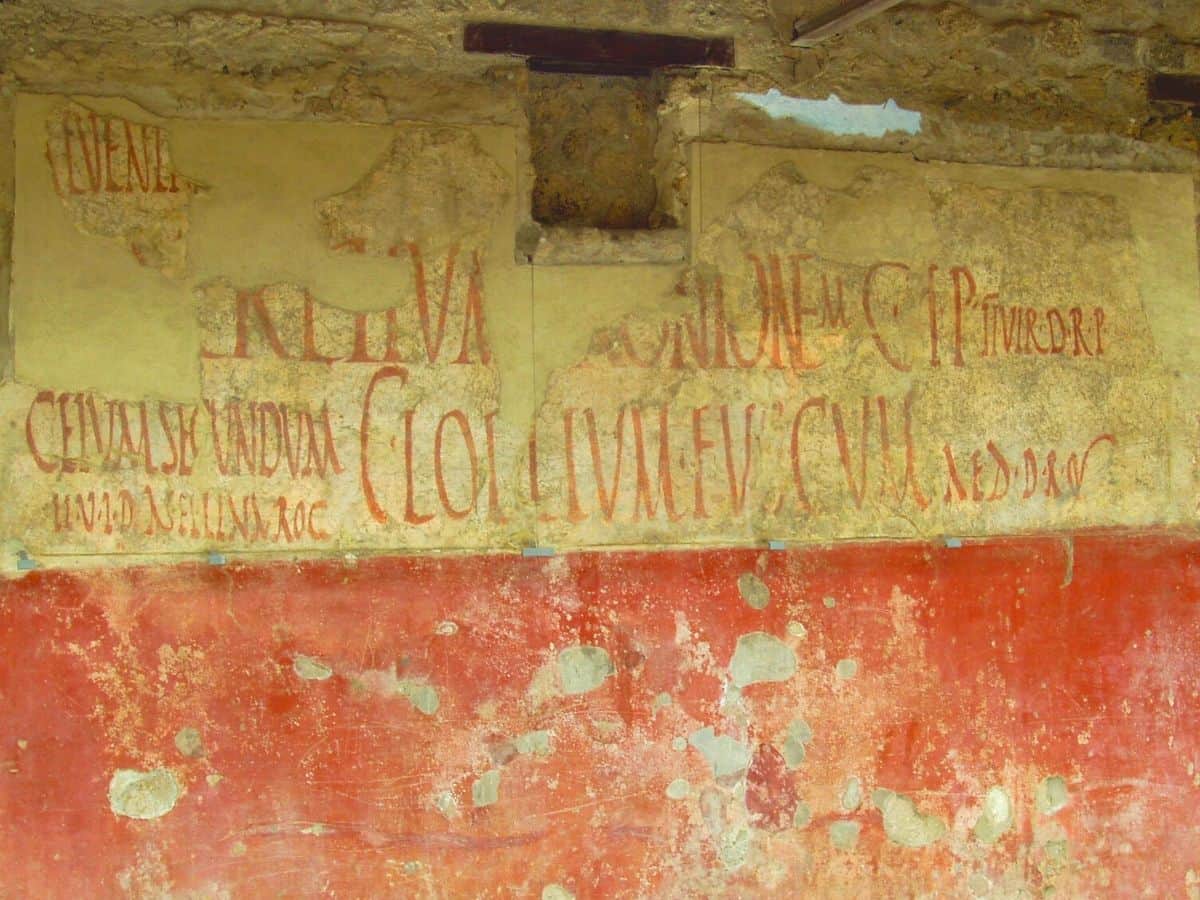Pompeii, Italy, is an incredible example of ancient Roman architecture. Well preserved due to the eruption its neighboring Mount Vesuvius, in 79 AD, and the city’s subsequent burial under layers of ash and pumice, it offers a fascinating insight in what life was like in ancient Rome - as well as how their buildings and communities looked from a structural point of view. See it all for yourself on a Pompeii day trip from Rome!
Interior decor at Pompeii

The houses around Pompeii were filled with art. Mainly these took the shape of beautiful frescoes on the walls - and as they are not portable, like a small framed painting, they have not been lost as the years have rolled on. Thankfully, this means historians can study them to gain an insight into ancient Rome and Roman architecture.
Frescoes are created by pigment being applied to wet plaster. There are four ‘styles’ of fresco - different phases from the early ones to the latest. The first is known as Incrustation Style, popular from approximately 200 to 60 BCE, which involved painting fake slabs of precious materials - such as colored marble - on the walls. Stucco moldings were added to connect each slab, creating a fascinating 3D effect. Next came the Architectural Style, popular from around 80 BCE to the late 1st century. These were created like optical illusions - using perspective to make it seem like you were seeing it through a window, for example. They also painted life-sized trees on the walls, so it appeared that you were outside: the dining room of the Villa of Livia is an example of this, and we are able to understand more about the fresco here due to the ones in Pompeii.
The third style of fresco, known as the Ornate Style, is extremely deatiled. This was popular from around 20 BCE to 20 CE - so there are clear overlaps in the styles. In basic colors such as red, white and black, there was a lot of surface ornamentation. Images within the frescoes of this style were straight from the artist’s imagination! Egyptian themes were introduced to ancient Roman art during this time period, so the Ornate Style frescoes have a bit of that too. Lastly is the Intricate Style. This is, to put it simply, a combination of the previous three styles. There are faux marble blocks, illusions and unlikely architecture as well as still-life, mythology and different landscapes. The Intricate Style was common from around 20-79 CE.
Pompeii tours from Rome will allow you to see the frescoes that still remain in this preserved ancient city. Marvel at the detailed artwork that adorned the houses of everyday citizens and try to imagine how long they took to create! As there was, of course, no television or radio in ancient Roman times, frescoes were often a source of entertainment in the homes of the people of Pompeii too. This extended throughout ancient Rome, as evidence of frescoes can be seen far and wide across the Roman empire.
Running water in Pompeii

Not all of the homes in Pompeii has access to running water. For the most part it was the rich citizen who had running water in their homes, paying a fee dependent on the size of the nozzle used in their home-plumbing system. Other people - those unable to afford their own water supply - would use the many public fountains dotted around the city.
The simplicity of these fountains, a far cry from the famous baroque fountains in Rome, show us that the original fountains of the ancient Roman Empire had a much more practical purpose than simply just a work of art. They were an essential part of daily life in Pompeii (and ancient Rome as a whole). For those who did not have personal access to running water these fountains were necessary for drinking, cooking and cleaning.
Pompeii had public baths, too. These were used by everybody - for bathing, socializing, business meetings and more. The public baths, which you can see on our tours from Rome to Pompeii, provide us with an excellent insight into bathing habits of the ancient Romans. They are spectacularly preserved and offer insight into how they were built with hot and cold rooms, and separate areas for men and women too.
Innovation in Pompeii

Being as it is one of the best-preserved examples of an ancient Roman city, Pompeii is a fantastic way to see all of the innovative archaeological ideas that the ancient Romans came up with. For example, the aforementioned running water was carried by aqueducts - and while these can be found in other parts of the country, Pompeii gives us a comprehensive insight into the innovative ways of the ancient Italian citizens - especially on a Rome to Pompeii tour, which is one of our most popular day trips from Rome.
There is ancient graffiti in Pompeii, and while not necessarily an example of incredible ancient Roman architecture it suggests some things about the way ancient cities were built. The graffiti includes political bulletins, and messages between friends or enemies as well as the classic ‘So and so was here’. The graffiti found at Pompeii, especially the political broadcasting and the advertisements, suggest that ancient Rome had nothing in place for conveying messages to people on a wide scale. This in itself is something huge that we can learn from Pompeii.
As a city, Pompeii has so much to draw from. The amphitheater is the oldest surviving ancient Roman amphitheater, and this shows us so much about the very original ideas of the ancient architects. Pompeii had a market, and the forum around which daily life centered; it had brothels, and stunning villas, and stables for the horses. There is so much to see on a Pompeii tour from Rome that allows us an insight into other ancient Roman architecture, and about Pompeii itself.


